Photos of the old Wild West
Living in the Wild West was an intense experience. There were frequent gunfights, saloons were everywhere, and the men wore crazy mustaches. Fortunately, we still have some unbelievable pictures from those bizarre days in the 19th century. Pictures that won't change the way you think about how the West was won, but they will make you appreciate that much more. Wait until you meet some of the most colorful characters and hear about the ordeals people had to endure in the Wild West.
Missions That Carried A Legacy
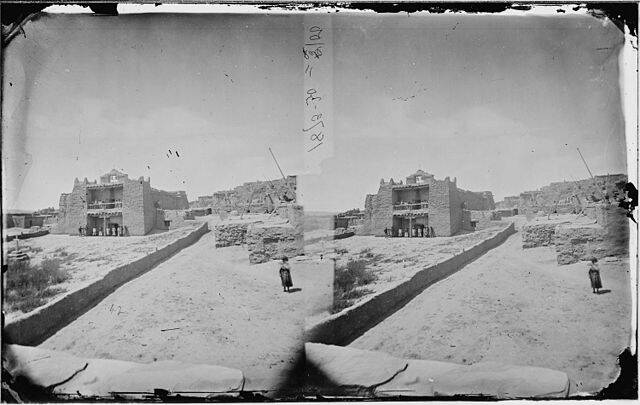
This Mission Church was built in 1630. It is one of the earliest signs of the Spanish Colonial era. Located in New Mexico, this church is on the small side but is still impressive. You can still visit it today if you'd like to experience some history.
These sites are steeped in history, and it's incredible to see what they looked like trapped in time in a picture like this. You can even see people walking around the mission, going about their everyday lives.
Goldie Sets A New Standard

Goldie Griffith wasn't just another piece of eye candy. Griffith was a part of Buffalo Bill's Wild West Show, where she was known for her boxing and wrestling skills. She also had a set of numerous other skills that were more masculine than feminine and these abilities helped her become a star.
In today's world, she probably would have made a living as a WWE superstar or a UFC stalwart. Back then, she did the best she could with the opportunities she was given.
They Called It The Gould And Curry

Mining was an essential part of the Wild West. It was a huge part of the economy and it provided many jobs for people. This mine is located in Virginia City, Nevada. The population of a city was relative to how much resources were available in the mine.
So when the materials being mined were at a high in Virginia City, so were the number of people living there. And when the materials were gone, many cities were forced to find new industries or fall apart.
The Name's Billy

Probably the most famous outlaw from the Wild West, Billy the Kid was a dangerous gunfighter. The man who was born Henry McCarty killed at least eight men at a very young age.
He was eventually killed by Sheriff Pat Garrett when he was caught off-guard in the dark at a friend's home. Maybe not the most glamorous way to go, but the real Wild West rarely followed the plot movies would make you believe they did.
The Soiled Doves

Burlesque dancers in the Wild West were staples of the saloon scene. They were regarded so highly that some of them became millionaires. They were called different names based on their locations. For example, the California-based women were called "soiled doves" by the cowboys.
Any city you went to, you could be sure to find a saloon. Whether you decided to enter said saloon would have been entirely up to you.
Attacked At A Young Age

This young woman's family was taken when she was only 14. Olive Oatman and her sister survived but were held against their will and later sold to the Mohave people.
Both girls received distinctive tattoos on their chins, which signified that they were members of the tribe. Some people believe the tattoos were meant to mark the girls as slaves, but this doesn't align with Mohave tradition. In the Wild West, Native American tribes were often referred to as "Savages," a term that brutalizes their history. While it's true they were responsible for some horrible crimes, so were the Cowboys forcing them out of their homeland.
The Wild West Charging Thunder
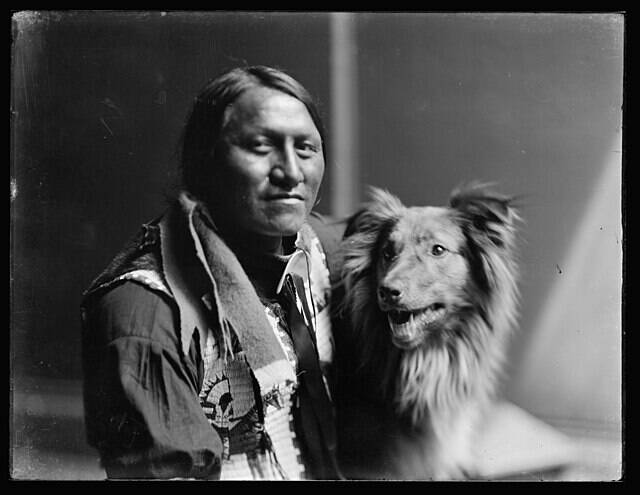
Meet Charging Thunder. He joined the Wild West Show when he was 26 and eventually married one of the horse trainers. Once he was done with the show, he became a British citizen and worked at the circus in Manchester.
He later changed his name to George Edward Williams and found a factory job. It's safe to say he changed a lot from his humble beginnings. Now we just need to know what the dog's name was.
The Renowned Jesse James

Jesse James was a bad man. He was more than just an outlaw. James was a gang leader, a murderer, robber, and guerrilla fighter. He and his brother formed the Younger Gang together. The two were Confederate bushwhackers during the Civil War. That's quite a sibling bond right there.
James is one of the most famous gunslingers from the Wild West and has been depicted on the silver screen multiple times.
Sharpshooter Annie

One of the most famous Wild West characters, Annie Oakley rose to fame at a young age. She trapped and hunted by the age of eight, and became a great sharpshooter when she was 15.
She did all of this to support her family after her father had passed away. Her intentions may have been noble, but that doesn't mean she always did the right thing. Then again, morals weren't exactly the law of the land back then.
The Sioux Teepees

The Sioux Nation is comprised of three tribes (Lakota tribes, Western Dakota and Eastern Dakota). They lived in the Great Plains, hunted bison, and built these teepees as their homes. This picture was taken in the Dakota Territory.
Teepees may look like simple structures, but creating them was actually an incredible balancing act. They had to be sturdy, yet easy enough to disassemble in case the people living there needed to move at a moment's notice.
The All-Around Man

Here we see another well-known man by the name of Doc Holliday. He gained notoriety through his gunfighting skills. He was also a gambler and dentist. Holliday was diagnosed with tuberculosis while he was a dentist and that is when he went off to become a gambler in Arizona.
Today, that would have been seen as a pretty drastic career shift. Back then it was another day at the office, although his patients probably weren't very happy about it.
Wyatt Earp Was Not To Be Messed With

A friend of Doc Holliday, Wyatt Earp was into gambling even though he was a sheriff in Arizona. He earned his fame after a gunfight at the O.K. Corral in which he killed three cowboys.
The gambler, brothel owner, and miner was called an "old offender" by a local newspaper. He also might have been one of the country's first true entrepreneurs. Just look at all those businesses he owned!
The Fierce Rose Dunn

In what could be an entertaining movie storyline, Rose Dunn became romantically involved with gang member George "Bittercreek" Newcomb when she was only 15. Newcomb's gang got into a shootout and went into hiding. When Newcomb came back to visit Dunn, her brothers shot him and collected his bounty of $5,000.
Some say Dunn set him up, but we'll never know. It would have been a great plot twist though if we didn't just spoil the ending.
Kit Carson Helped Develop California

Christopher Carson, better known as Kit, a wilderness guide, fur trapper, and army officer is pictured here. He was a frontier legend of the wild west and has had his life exaggerated throughout the years.
One of his most notable accomplishments was helping to develop California. Not only did Carson lead tours throughout the territory, he also participated in the conquest of California at the beginning of the Mexican-American War.
Women And Guns

Sure, there are plenty of men on this list who were highly known for their gun skills. But there were some women who had skills with their weapons as well. Women like Big Nose Kate, Calamity Jane, and Lillian Smith were some fierce women who could be deadly when they wanted.
Women weren't underestimated back then. If you came across one carrying a gun, you knew not to mess with her you wanted to get in trouble.
George Crook Was The "Chief Wolf"

George Crook spent his entire career in the United States Army as an officer and was noted for his distinguished service. He served in several major conflicts during the 1800s and was nicknamed "Chief Wolf" by the Apache Nation.
Here we see Crook in 1885 on a mule. After spending a career fighting Native Americans, the U.S. soldier spent the finals years of his life advocating for the ones who fought alongside him.
The Union Pacific Railroad Under Construction

This photo shows the Union Pacific Railroad while it was still under construction. The railroad stretched from Iowa to San Francisco and was designed to create a transcontinental railroad for more efficient transportation.
After six-years, construction of the railroad was completed and was considered a major success. First run in 1862, the railroad is still functional today with a total length of 32,200 miles and 8,300 operational locomotives.
The Cowboy

The word "cowboy" stems from the Spanish term "vaquero." The word means a livestock herder riding a horse. The cowboy tradition also has Spanish and European roots. You needed skills and a lot of strength from an early age to be able to be a cowboy.
The standard attire for a cowboy was a pair of jeans, leather gloves, a bandana, boots, and a wide-brimmed cowboy hat. Some country singers still rock this outfit today.
Old-Fashioned Saloon

Saloons could be bawdy places. Some had dancing girls and dice games, and others had pastimes like bowling. Some people just went to relax and others partook in the seedier elements offered by the saloons. Bob Leavitt's Saloon was in Jordan, Montana.
This saloon might be a little smaller than what you would expect to see thanks to Hollywood, but that doesn't mean it was any less rowdy. One wrong movie, one poker player caught cheating, and the whole place could go crazy.
Shoot-Your-Eye-Out Vermillion

His parents named him John Wilson Vermillion but people in the Wild West called him Texas Jack. He was an amazing gunfighter who worked with the Earps (who we'll talk more about later) while on the hunt for outlaw cowboys.
His other nickname was "Shoot-Your-Eye-Out Vermillion" because he once shot someone's eye out. That's pretty violent even for the Wild West. Hopefully, he ended paying the price for his incredibly misguided behavior!
Mining Was No Simple Task

This miner was captured hard at work in Virginia City, Nevada. After silver was discovered there, many people flocked to Virginia City to work in the mines. This one in particular is 900 feet underground. After the mine was excavated clean, the city's population died down.
Life as a miner was a dangerous life, but it could prove fruitful for anyone who found precious minerals. Sadly, dangerous conditions inside these mines didn't allow many to live long lives and enjoy their spoils.
Mining Towns Popped Up Everywhere
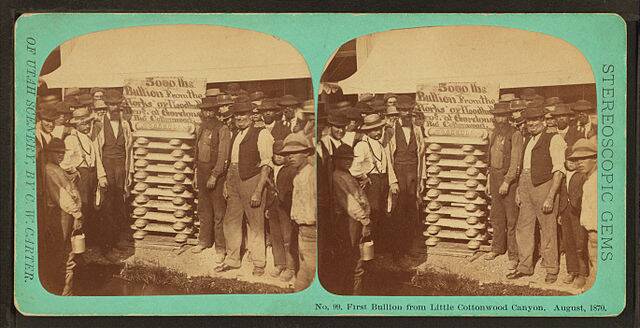
Little Cottonwood Canyon is located just 15 miles from Salt Lake City, Utah. Many mining towns like this popped up all over the west. Those in the Utah area were often founded by Mormon miners, who helped build Salt Lake Temple with quartz monzonite, granite, and granodiorite.
Some cities thrived after the mines closed. Salt Lake City is still one of the United States most visited tourist destinations. Others, as we've already mentioned, were left to the ghosts.
Meanwhile, Chinese Immigrants Built Railroads
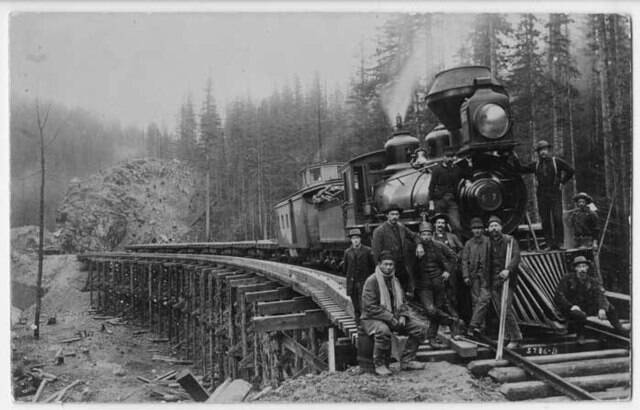
One often forgotten fact of the Old West was that about Chinese railroad workers. They were often paid very little in comparison to their white counterparts and companies refused to provide room and board. If not for these men, the Transcontinental Railroad might cease to exist.
It wasn't a fair trade for these workers to be forced to live these kinds of lives. Like miners, work conditions could become unruly at a moment's notice.
The Bathhouse Was The Place To Be
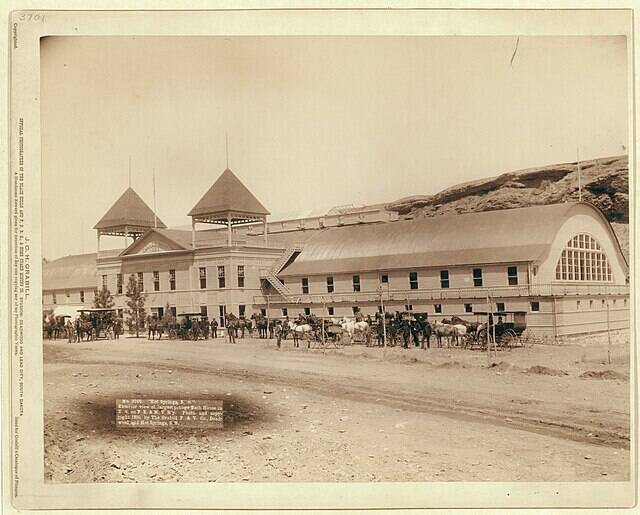
This is the bathhouse in Hot Springs, South Dakota. The area was hailed for its warm, natural springs and frequented by the native Sioux and Cheyenne tribes. They considered the springs to have healing properties and therefore regarded Hot Springs as a sacred space.
Today hot springs are still heavily visited attractions nationwide. People flock to hot springs to relax and refresh themselves after long weeks of work or just for fun family get aways.
The Crew At Diamond Creek
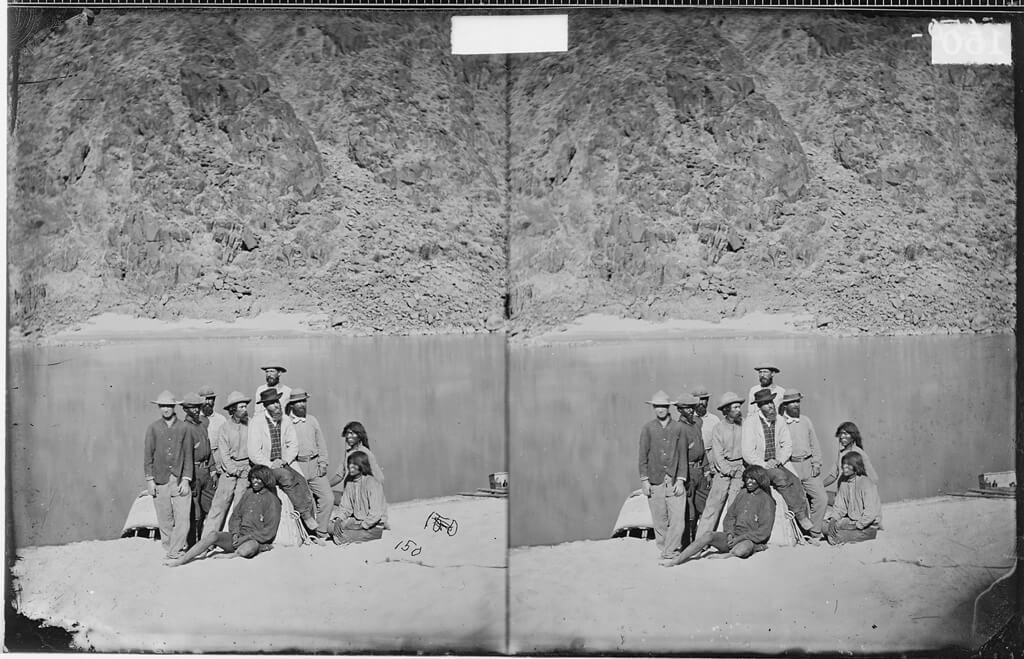
Here's another classic photo by Old West photographer Timothy H. O'Sullivan. Sullivan captured this boat crew at Diamond Creek, which is located along the Colorado River. Some sources say this is The Wheeler Survey Group, which embarked on an expedition to survey the Western United States.
After taking pictures of the Wild West, O'Sullivan settled down in Washington D.C. where health problems ended up ending his life at a very young 42-years-old.
Navajo Family Life

Timothy H. O'Sullivan also captured moments of Native American family life in the Old West. This is a photo of a Navajo family in Canyon de Chelle, which was located in the New Mexico Territory.
On the right, you can see a woman with her loom and on the left, a man holds a bow and arrow. This picture is much more naturalistic then a previous Timothy O'Sullivan picture featured earlier.
This Tribe Had Style
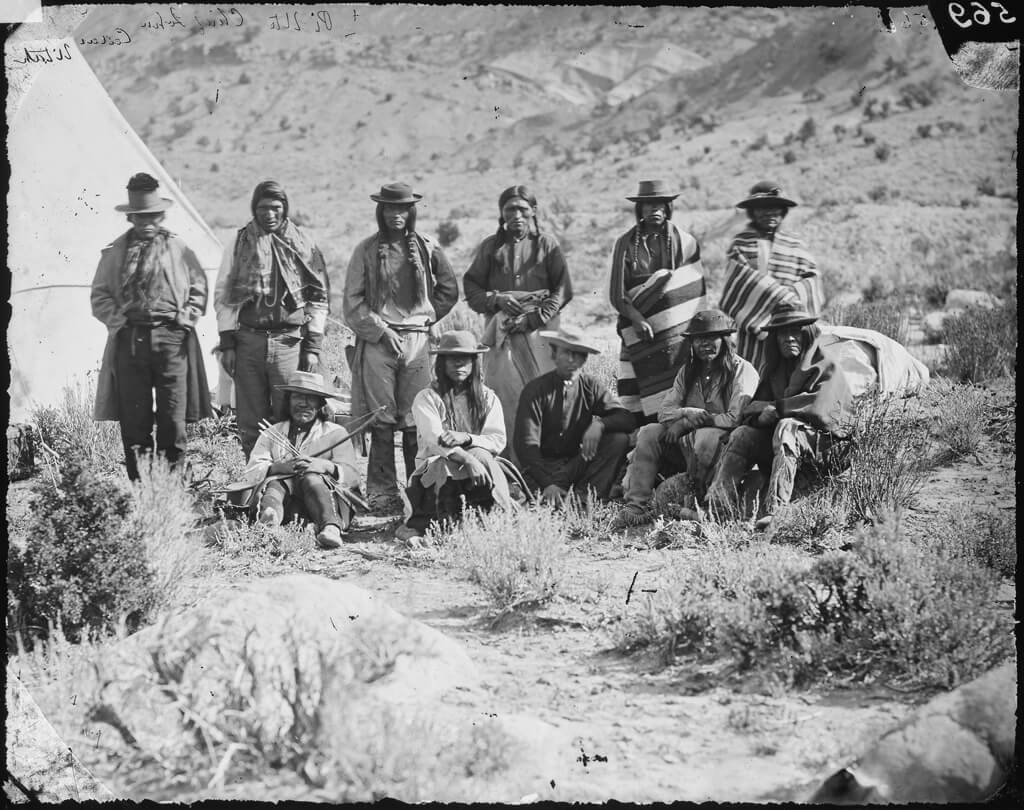
In 1871, Timothy O'Sullivan joined a geological survey team, which enabled him to travel all over the West. While in Cedar, Utah, O'Sullivan captured this shot of members of the Pah-Ute Indian Group, also known as Paiute.
These guys were likely of the Southern Paiute people, given that they were in Utah. Thanks to O'Sullivan's skills with his camera, we have a much better understanding of what life was like for Native American tribes back then.
Cleansed By Mother Nature

This is a photo of a man bathing in the Pagosa Hot Springs of Colorado. It must have been refreshing for this man to have the springs all to himself. It certainly would have felt better than a sponge bath, which is how people in the Old West often bathed.
That's right, despite rumors that people weren't able to bathe, it was much more common in the past that we like to think.
A Buffalo Soldier

This is a Buffalo Soldier in the 9th Cavalry Regiment of the United States Army in 1890. The name was given to African-American members of the cavalry by Native American tribes during the Indian Wars.
The Buffalo Soldiers were established by Congress as all-black regiments in the Army back then. These soldiers became some of the most important and decorated men of the American armed forces. Like we said, if you handle a weapon and ride a horse, people looked at your differently back then.
Traversing The Desert

Timothy O'Sullivan captured this photo of a wagon crossing the sand dunes of the Carson Desert in Nevada. Much of the Western United States turned out to be desert, which might have come as a surprise to the folks who traveled out there for the first time.
The high heat and lack of resources made these journeys dangerous for any groups who didn't bring enough supplies or were not skilled at rationing the supplies they had.









